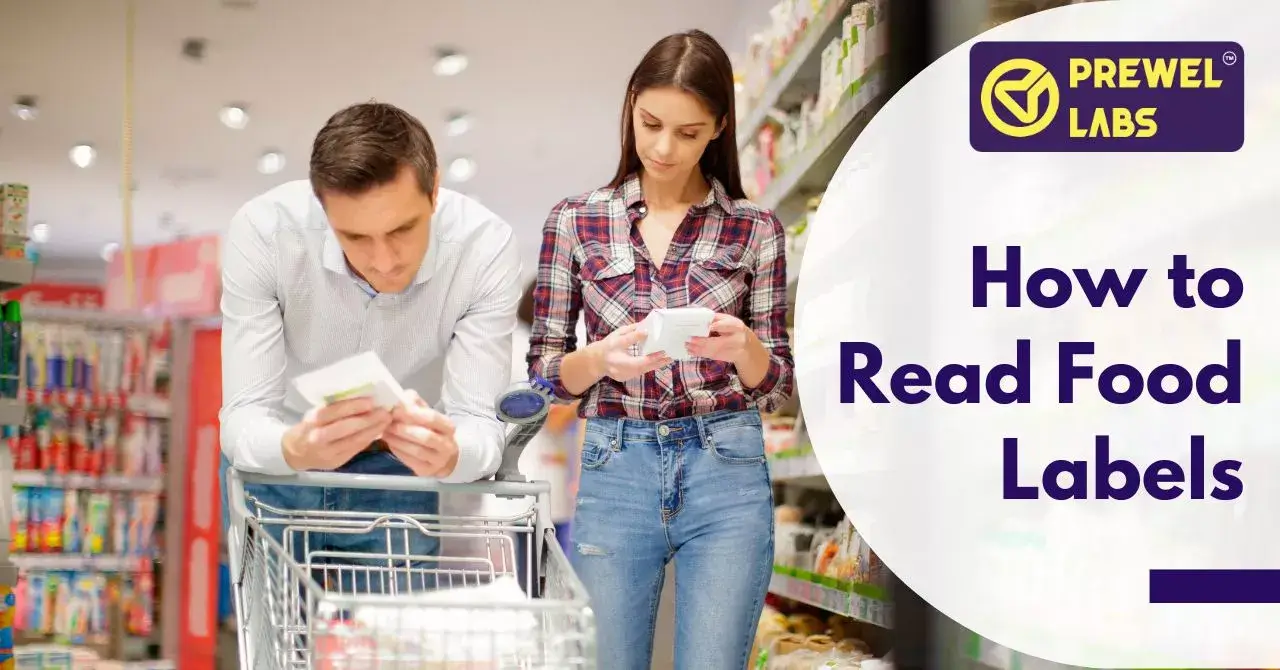
18 Jul
How to Read Food Labels
Staring at Food Labels in the Supermarket
Remember the last time you stood perplexed looking at the shelves trying to read food labels that had more than a dozen variety of food items that you wanted to buy. You’re not alone when it comes to deciding which brand of cereals to buy. Often, we look at the food labels and spend a lot of time understanding what the difficult terms on them mean. And it’s not an easy task when most food companies are keen on making food labels undecipherable.
But if you have ever wondered how healthy the food you’re buying is or for that matter packaged drinking water, this guide will help you read food labels better and save you any headache.
Read Food Labels – What the Glossy Front Label says!
The packaging label on the front of any food item will have every claim that can persuade you to buy that item but don’t get swayed by these. There will be a “low-calorie” version of your favourite cookies, and a “cholesterol-free” version of the sandwich spread.
But the truth is any “trans fat free” food can have 0.2 gm trans-fat per serving and any “saturated fat-free” item may have 0.1 gm (or less) of saturated fats per 100 gm or 100 ml.
There is also the “no added sugar” claim that gets added to all foods that have naturally high levels of sugar.
This means that any product claiming to have zero this-or-that is misleading. And your favourite diet snack may have the same calories as the not-so-shiny pack.
Deceiving words on Food Labels
You may also find adjectives such as “real”, “natural”, and “enriched” accompanying these claims. First things first, if these adjectives are in the company’s trademark name, all it does is deceive you.
And to make the matters worse, these claims are sprinkled on the packs too.
Even though the FSSAI prohibits companies from making these claims, the practice continues.
After all, who knows how much natural fruit ingredients are used while food processing.
This is why you need to read the labels on the back.
Recommended Dietary Allowance
The FSSAI has also asked manufacturers to put on the front how much of the Recommended Dietary Allowance (RDA) a serving makes, which can sometimes be helpful.
Read Food Labels – Now, onto the Back Label!
Once you have read the claims, you should turn to the back and see two major labels, which are the ingredients section and the nutritional information label. Although a study published in the British food journal does state that most labels have “difficult terminology and small font size”, we have to understand them better to make healthy food choices.
The Ingredients when you Read Food Labels
To help you read food labels better let me explain more about the ingredients. The ingredients of a food item are always given in the decreasing order of their amount. This means that the first ingredient is always the highest in amount and the second lesser and so on.
Sugar in Processed Food
The first thing to do is to look out for sugars and sweeteners. While glucose, dextrose and sucrose may be obvious, syrups and sweeteners are mostly overlooked. Some manufacturers may also use sugars like dextran and maltodextrin, which are very easy to miss. But, we have to be on the lookout for all of these tidbits.
Sugars are also added to foods that don’t taste sweet and it is the main source of most of the calories. They are readily metabolized and lead to a sudden spike in blood glucose and you need to take care of this if you are a diabetic.
Refined Grains
Other than sugars, refined grains and edible vegetable oils are also dangerous for health. If these make for a large amount of the item you are going to buy, you should keep it back on the shelf. Often, we will also see some enriched grains in our ingredients, but these are less healthy than whole grains as the processing destroys a lot of their nutrients (especially vitamins).
Food Additives
Food additives mentioned using the codes in ingredients are also harmful to health and any foods containing these can be a risk for children. A type of food additive, bisphenols, can impact your immune and nervous system while others, such as Phthalates, PFCs, and Perchlorate can interfere with brain development and increase the risk of cardiovascular disease in children.
The Nutritional Information Label
- The Nutritional information label gives you a brief idea of all nutrients the food contains and how many carbohydrates will each serving contain.
- Carbohydrates (including sugars) are our body’s major energy source, whereas proteins help in muscle development. The number of calories in the item should be looked at. Often, 40 calories are considered low, 100 moderate, but more than 400 calories are too high for a portion of food.
- Sodium, iron and other vitamins and minerals, though are needed in small amounts, are required for various functions in the body. But, it’s good to be
- Since nutritional information is put according to 100gm or 100 ml (FSSAI regulations), comparing different brands is easier for you when you are browsing the shelves to read food labels. Sometimes, you may find the information according to servings, then you should compare the size of the serving!
These are some actionable tips for buying healthy food but if given the choice, do not buy processed foods. If you still have to, read food labels and find the best product.
We as a NABL accredited Lab strive to make sure the people lead healthier lives in our society. That’s why we conduct all types of food testing options for you including nutritional and shelf life studies.
How Prewel Labs Helps you?
We conduct nutritional analyis & shelf life study helping new food startups to comply to all FSSAI standards. Our NABL accredited food testing lab is located in JP nagar Bangalore.
Learn about benefits of Food Testing
We comply with ISO 9001:2015 standards and FSSAI standards. Check out our other food testing services:
Microbial
Adulterant
Nutritional value
New product development
Shelf life
Stability studies
Hygiene monitoring program
Adulterant
Nutritional value
New product development
Shelf life
Stability studies
Hygiene monitoring program

